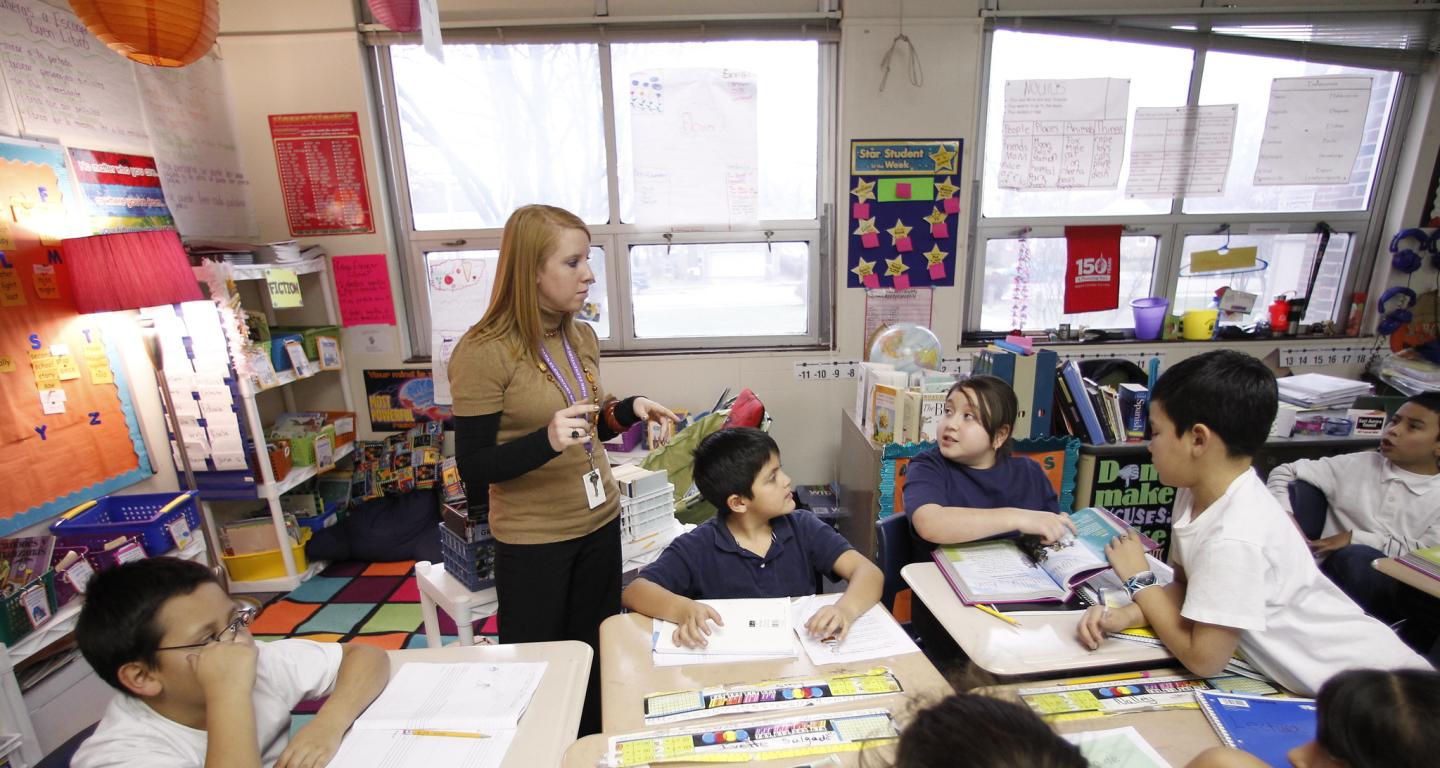A Comprehensive Overview to the Different Knowing Methods in Primary Scientific Research Guideline
The expedition of varied learning methods in main science direction provides an opportunity for teachers to enhance student involvement and understanding considerably. By taking a look at hands-on discovering techniques, inquiry-based approaches, and joint techniques, we can determine reliable practices that provide to numerous learning designs. Furthermore, the combination of modern technology and distinguished instruction plays an important function in cultivating an inclusive setting. Nonetheless, the concern remains: just how can these approaches be effectively applied in the class to maximize their impact? The response hinges on a more detailed assessment of each approach and its effects for training science.

Hands-On Discovering Methods
Hands-on understanding techniques play a pivotal duty in main scientific research instruction, involving trainees in energetic expedition and testing. These methods enable learners to connect directly with materials and phenomena, fostering a deeper understanding of clinical concepts. By utilizing manipulatives, models, and real-life experiments, teachers produce an environment where pupils can observe, hypothesize, and check their ideas.
Such methods not just improve understanding however likewise cultivate vital thinking and analytic abilities. When trainees take part in tasks like developing basic devices, growing seeds, or carrying out chain reactions, they are encouraged to ask questions and seek solutions with their very own monitorings. This experiential method assists to debunk complicated scientific principles, making them more relatable and accessible.
Furthermore, hands-on discovering promotes partnership amongst peers, as pupils commonly operate in groups to conduct experiments or share findings. This teamwork not only improves their discovering experience however likewise develops vital social abilities. Inevitably, integrating hands-on techniques in key scientific research guideline fosters a lifelong love of learning and interest regarding the natural globe, laying a strong structure for future scholastic searches in scientific research and beyond.
Inquiry-Based Knowing
Inquiry-based understanding is an educational approach that encourages trainees to ask inquiries, investigate sensations, and build their very own understanding of clinical principles. This method shifts the focus from conventional teacher-led direction to an extra student-centered experience, where students take the campaign in their instructional trip. By cultivating interest, inquiry-based learning promotes much deeper involvement with the material, permitting trainees to discover subjects in a meaningful context.
In method, this method frequently involves hands-on experiments, observations, and important thinking tasks that straighten very closely with the clinical method. Students are encouraged to develop theories, design investigations, and examine data, which grows vital abilities such as logical and problem-solving reasoning. The function of the educator in this structure is to help with expedition, directing pupils through the questions procedure while urging independent idea and collaboration.
Moreover, inquiry-based learning nurtures a sense of possession over the discovering process, motivating trainees to seek knowledge actively. This method not just enhances understanding of clinical concepts but additionally cultivates a lifelong love for understanding, equipping students with the skills required to browse a significantly complex globe.
Collaborative Learning Approaches
Joint knowing techniques empower students to take part in significant interactions with peers, fostering a common obligation for their instructional outcomes. In main scientific research instruction, these approaches motivate learners to collaborate to check out clinical principles, solve issues, and carry out experiments (primary science tuition Singapore). By joining team tasks, pupils can take advantage of diverse point of views, straight from the source permitting for richer understanding and retention of scientific knowledge
One trick facet of joint discovering is the emphasis on communication skills. Trainees should articulate their ideas, listen proactively to others, and discuss concepts, every one of which are important expertises in both real-world and scholastic contexts. This social interaction not only improves their understanding of clinical concepts yet also advertises synergy and conflict resolution abilities.
Furthermore, collective learning often results in raised motivation and engagement. When trainees see the worth of their contributions within a group, they are a lot more likely to take ownership of their knowing journey. Teachers can facilitate this procedure by designing organized team tasks that align with educational program objectives while providing support on reliable partnership strategies. Generally, including collaborative knowing techniques in main scientific research direction grows a vibrant knowing environment that prepares students for future academic and social challenges.
Technology Integration in Scientific Research
The assimilation of modern technology in key scientific research direction boosts finding out experiences by supplying ingenious tools and sources that sustain different training approaches, including collective knowing - primary science tuition Singapore. Using digital platforms, simulations, and interactive applications enables students to engage deeply with scientific concepts, helping with an extra hands-on strategy to discovering
Digital research laboratories, as an example, make it possible for learners to carry out experiments safely and effectively, promoting inquiry-based learning. These tools can mimic real-world clinical situations, permitting trainees to imagine intricate procedures that would certainly be difficult to duplicate in a typical class setting. Furthermore, innovation promotes communication and cooperation amongst students, as they can share searchings for and collaborate on projects via online platforms.
Furthermore, multimedia presentations and educational videos can enhance lessons by accommodating diverse knowing designs, making abstract concepts much more accessible. Information analysis tools likewise encourage trainees to accumulate and interpret scientific information, reinforcing important thinking skills. Overall, the calculated unification of innovation in primary scientific research direction not just enhances engagement but likewise prepares students for a technically innovative society, furnishing them with essential skills for future clinical ventures.
Separated Instruction Approaches
Separated instruction strategies are crucial for resolving the diverse demands of learners in key scientific research education. These techniques allow teachers to tailor their teaching methods to fit differing capabilities, rate of interests, and discovering designs within the class. By utilizing differentiated instruction, teachers can produce an inclusive environment that cultivates involvement and enhances understanding of scientific concepts.
One efficient approach is to make use of flexible grouping, which enables students to collaborate with peers at comparable ability degrees or with varying point of views. This method motivates peer discovering and promotes critical reasoning. Additionally, using choices in projects can empower students, permitting them to choose jobs that reverberate with this article their rate of interests while still meeting curricular purposes.
Moreover, including tiered jobs is another beneficial technique. By click here now creating jobs with varying levels of intricacy, teachers can make sure that all pupils are properly tested, no matter of their effectiveness. Making use of developmental evaluations to assess comprehending more makes it possible for educators to readjust their instructional techniques dynamically, ensuring that each student receives the support they require.
Ultimately, applying separated instruction techniques in key science education and learning not only boosts student discovering results but likewise cultivates an enthusiasm for scientific research, preparing pupils for future academic quests.

Verdict
In summary, efficient primary science guideline requires a complex strategy that incorporates hands-on discovering, inquiry-based approaches, and joint methods. The combination of technology and separated guideline additionally deals with varied understanding designs, fostering an environment helpful to exploration and important thinking. By applying these approaches, teachers can enhance student engagement and comprehension, inevitably supporting a lifelong passion for science and inquiry. Such extensive techniques are crucial for developing educated and curious future researchers.
The expedition of varied knowing approaches in main science direction offers a chance for instructors to improve trainee engagement and understanding substantially.Hands-on discovering strategies play a pivotal function in primary science instruction, engaging trainees in energetic exploration and experimentation.Inquiry-based understanding is a training strategy that urges trainees to ask questions, explore phenomena, and build their own understanding of clinical principles.Collective knowing approaches encourage pupils to engage in meaningful interactions with peers, fostering a common obligation for their academic results. Generally, integrating joint knowing methods in key science direction cultivates a dynamic knowing setting that prepares pupils for future academic and social challenges.